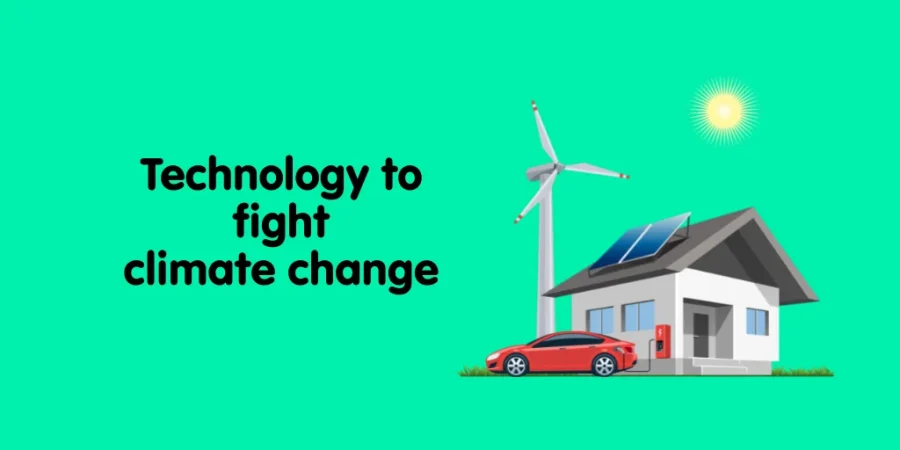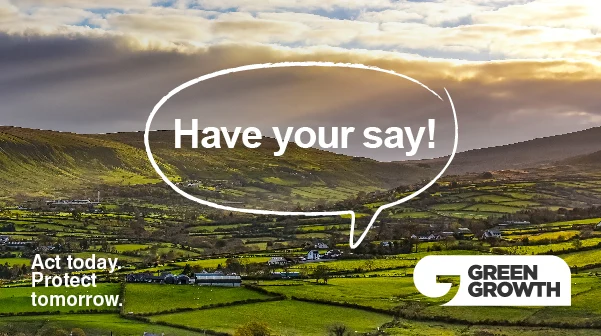How we’ve lived our lives has affected our planet. We can no longer sit back and ignore a problem that is escalating. Our planet is heating up and with it the climate is becoming more and more erratic. Can we fix what has become a human problem?
What causes climate change?
Among the scientific community, it is accepted that human activity has caused our climate to change over the last 100 years or so. These activities can be grouped into two broad categories:
- Generating more greenhouse gases (GHGs); and
- changing the land.
But don’t greenhouse gases occur naturally?
Yes they do. However, human activity (such as burning fossil fuels and cutting down forests) increases the concentrations of some of these GHGs in the atmosphere. We’re worried about the levels of:
- carbon dioxide
- methane
- nitrous oxide
- fluorinated gases
According to the The Climate Change Committee (CCC):
“Global CO2 emissions from human activity have increased by over 400% since 1950. As a result, the concentration of CO2 in the air has reached more than 400 parts per million by volume (ppm), compared to about 280ppm in 1750 (around the start of the Industrial Revolution).”
The debate around what’s causing climate change is futile. Melting ice caps, frequent extreme weather conditions, droughts and wildfires mean we need to find a solution.
How do we solve climate change?
The solution is both simple and extremely complex. The simple solution is that we all work together to change our behaviour. But us humans have a long and chequered past in collaborating with each other. What we need is a coordinated effort in the fight against climate change. Enter the Paris Agreement.
What is the Paris Agreement?
The Paris Agreement is a legally binding international treaty to tackle climate change and its negative impacts. 189 countries have joined the Paris Agreement.
- The Paris Agreement seeks to limit global warming to well below 2 degrees celsius, preferably to 1.5, compared to pre-industrial levels.
- Countries have also agreed to reduce emissions as soon as possible and are aiming to reach net-zero by the second half of the 21st century.
- The Agreement provides a pathway for developed nations to assist developing nations in their climate mitigation and adaptation efforts while creating a framework for the transparent monitoring and reporting of countries’ climate goals.
The hope of course, is that this will substantially reduce the impacts of climate change.
A Technology Framework
At the Katowice Climate Change Conference in 2018, Parties adopted the technology framework which further emphasized the importance of technological innovation in achieving the purpose and goals of the Paris Agreement. The technology framework recognised a pressing need for the accelerated and strengthened development and implementation of cost effective and better performing climate technologies. The framework states that innovation can be achieved through new collaborative approaches to climate technology research, development and demonstration (RD&D).
We are the real Climate Change Villains
Human activity since the industrial revolution has caused global temperatures to rise. We can trace biodiversity and habitat loss to human invasion. Make no mistake: we are the cause of climate change.
Energy Production
The burning of coal, natural gas, and oil for electricity and heat is the largest single source of global greenhouse gas (GHG) emissions. They called it the dark ages for a reason and no one is suggesting that we need to stop creating and using energy. However, we do need to switch to better ways of generating electricity and heat and become much better at storing it. Have you switched to a renewable energy supplier?
Travel broadens the mind but pollutes the air
14% of GHG emissions is created by transport. In other words, the movement of people and goods. For various reasons, we love our cars. So much so, that 71% of all journeys made in Northern Ireland are by car. Could you reduce the amount of journeys you make to reduce your carbon emissions? Take the Count Us In challenge to find out.
Humans are hungry
I’m not going to judge you for eating a burger. Or smashing avocado for your toast. We all need to eat. But, just so we’re clear, our dietary habits account for 12% of global CO2. There’s no point blaming the farmers. We’ve created a market and they are meeting demand. Are you prepared to change what you eat?
Humans created Cement
We are addicted to cement. “Each year, more than 4 billion tonnes of cement are produced, accounting for around 8% of global CO2 emissions…To bring the cement sector in line with the Paris Agreement, its annual emissions will need to fall by at least 16 per cent by 2030.” Making Concrete Change: Innovation in Low-carbon Cement and Concrete.
It’s hard to imagine life without cement, so we’re going to have to start innovating new building materials.
Just for fun
Did you know…Going to the gym and getting divorced increases your carbon emissions?
Using a treadmill 3 times a week will increase your CO2 emissions by 0.07 metric tons per year. In comparison, getting a divorce and moving into your own place increases your CO2 pollution by 2.8 metric tons.
Note: going to the gym does not end in divorce 🙂
Do we have the technology to fix climate change?
Us humans might be the cause of climate change, but we can also be the solution.
The UK government wants clean technology to lead the fight against climate change. The Committee on Climate Change (CCC) says that we need to adopt clean technology if the UK is going to meet its net zero emissions target. Clean technology is feasible and can be cost-effective.
The Clean Growth Strategy aims to create a favourable environment for the private sector to invest. This includes designing competitive markets and regulation, and funding technology development from basic research to pre-commercial trials.
Northern Ireland is in the early stages of developing its own policies. However, the Department for the Economy has consulted on policy options for our new Energy Strategy. These include the adoption of clean technologies and the benefits they bring, both environmentally and economically.
What are clean technologies?
“Clean technology is any process, product, or service that reduces negative environmental impacts through significant energy efficiency improvements, the sustainable use of resources, or environmental protection activities. Clean technology includes a broad range of technology related to recycling, renewable energy, information technology, green transportation, electric motors, green chemistry, lighting, grey water, and more”.
Source: Wikipedia.
Renewable Energy
In Northern Ireland, about half of our energy comes from renewable sources. We are aiming to produce more and the sector is ripe for innovation according to Nils Røkke, chairman of the European Energy Research Alliance (EERA). He is predicting that floating wind arrays could be cheaper than onshore wind farms within ten years. Currently, Northern Ireland does not have any offshore wind farms. Could we see floating wind arrays along our coast?
While the cost of solar energy has fallen by almost 90% over the past decade, there is still room to improve the efficiency of solar panels. According to Røkke “Systems which can utilize the largest spectrum of light give much higher efficiency. So I think there is really scope in that area”.
Wind accounts for over 80% of renewable energy in Northern Ireland.
Electric batteries
If we are to fully switch to electric cars and potentially generate our own renewable electricity at home, we’ll need better ways of storing energy. The good news is that battery technology is getting better and better every year. It’s now possible to buy an electric car that drives from Belfast to Dublin and back on a single charge. Tesla is selling a battery that stores the solar energy you have generated at home, thus reducing your reliance on the grid. Mass adoption of such batteries and battery powered devices will help mitigate climate change.
Carbon capture usage and storage
Carbon dioxide (CO2) capture and storage (CCS) is a process consisting of the separation of CO2 from industrial and energy-related sources, transport to a storage location
and long-term isolation from the atmosphere.
The UK Government supports the development of Carbon Capture Usage and Storage (CCUS). It believes that CCUS is one of the key technologies to mitigate climate change and help the UK reach its CO2 reduction targets. However, CCUS is controversial as it has high infrastructure costs, lacks commercial viability, and has concerns around safety.
Learn more about Carbon Dioxide Capture and Storage.
Using hydrogen
Many people are starting to believe that hydrogen can make a significant contribution to
decarbonising energy. Hydrogen is the most abundant element in the universe and is found in water. Therefore there’s lots of it to use. The advantage of hydrogen is that it is an energy intensive gas that can operate across all mediums of heat, transport and power, while only emitting water and oxygen at its point of use. While a long way away, there’s potential for hydrogen to be used to heat our home. In the meantime, Translink are trialling hydrogen powered buses on our roads.
Biomass
Renewable heat sources such as wood, grass or other organic material (known as Biomass) capture CO2 as they grow. It probably seems counterintuitive to then burn those materials for heat. But done correctly it’s not as bonkers as it seems. Through a process called pyrolysis (where biomass is used to generate heat and electricity inside a pyrolysis oven), CO2 is converted into solid carbon. This ‘by-product’ can be used to improve soil quality or safely put in long term storage.
Could we harness Nature?

The City of Medellín, Colombia, has planted more than 350,000 trees and shrubs since 2016. This greening of the City has created 30 shaded ‘corridors’. You might be starting to wonder why they would do this. Like all good answers, this one is simple. Not only does it make the City more attractive for its dwellers, but the greening effect helps to reduce the temperature. By a startling 3 degrees.
What happens when you plant trees and shrubs? You create habitat and encourage biodiversity while reducing air pollution. Cities all across the world are starting to take similar action. This approach is one of the cheapest climate-mitigation strategies a City can take.
How do we move forward?
There are many competing technologies in development that are all trying to do the same thing. But there’s something you can do today and that’s start thinking about how you can change your behaviour. What can you do to reduce your energy consumption? What can you do to reduce your carbon footprint? A simple lifestyle change can make a difference.




